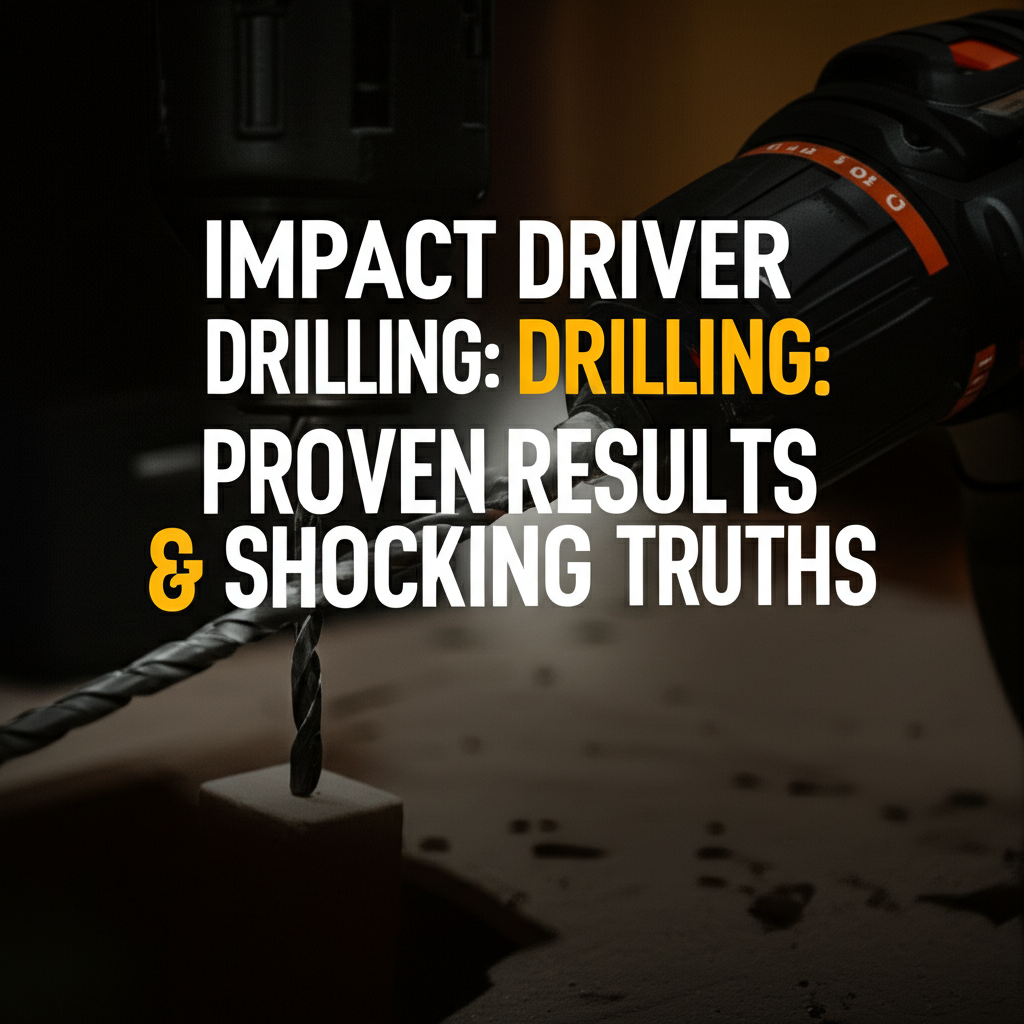Yes, you can absolutely drill with an impact driver! While designed for driving screws with powerful rotational force, impact drivers can effectively drill holes in various materials when used correctly. We’ll show you how to get proven results and uncover some surprising truths about this versatile tool.
Ever stared at your shiny new impact driver and wondered if it could do more than just drive screws? Many of us have been there, armed with a tool that feels like a powerhouse but unsure if it’s the right pick for drilling holes. It’s a common question, especially when you’re faced with a stubborn material or a project that requires a precise hole. The good news is, you likely have a tool that can handle the job, saving you a trip to the store for a separate drill. But there are a few key things to know to get the best results and avoid potential pitfalls. Ready to unlock another capability of your impact driver? Let’s dive in and discover how to make it your go-to for drilling tasks, along with some insights you might not expect.
Can You Drill With an Impact Driver? The Definitive Answer
Let’s cut straight to the chase: yes, you can drill with an impact driver. It’s a question many DIYers, home mechanics, and even seasoned professionals grapple with. The primary function of an impact driver is to deliver high torque for driving fasteners, but its rotational power and the percussive “impact” action can also be leveraged for drilling. However, it’s crucial to understand that not all impact drivers are created equal, and the technique can differ from using a traditional drill.
The “impact” in an impact driver refers to the rapid, powerful rotational blows delivered to the output shaft. This is what makes them exceptional at driving long screws or fasteners into tough materials without stripping them or straining your wrist. When you switch to drilling mode (or use a drill bit designed for impact drivers), this same mechanism helps the bit cut through materials. It’s this dual capability that makes impact drivers so versatile and increasingly popular in workshops and garages everywhere.
Understanding the Impact Driver’s Mechanism for Drilling

To truly understand if and how you can drill with an impact driver, it’s helpful to know how it works. An impact driver uses a rotating mass (hammer) that is driven by the motor. This hammer strikes an anvil, which is connected to the output shaft. The striking action applies rotational force, or torque, in rapid pulses. When you’re driving screws, this concentrated torque prevents the screw head from camming out and your wrist from twisting.
When drilling, the principle is similar. The spinning bit, propelled by the hammer-and-anvil mechanism, cuts into the material. The key difference from a standard drill is that the impact driver’s primary motion is rotational torque delivered in bursts, whereas a hammer drill adds a linear, back-and-forth pounding action in addition to rotation. This distinction is important when selecting bits and materials.
Impact Driver vs. Drill: What’s the Difference for Drilling?
It’s essential to differentiate an impact driver from a standard drill and a hammer drill when considering drilling applications. Each tool has its strengths:
- Standard Drill/Drill Driver: Primarily designed for drilling holes and driving screws at lower torque settings. It offers consistent rotational speed and control, making it ideal for precision drilling in delicate materials like drywall or thin metal.
- Hammer Drill: Combines rotational drilling with a forward-and-backward hammering action. This makes it excellent for drilling into masonry, concrete, and brick, where the hammering helps break up the material.
- Impact Driver: Specializes in high-torque rotational fastening. While it can drill, its strength lies in its powerful, percussive rotational blows, making it ideal for drilling into denser woods, harder metals, and even some plastics, especially when using appropriate bits.
Here’s a quick comparison:
| Feature | Standard Drill/Drill Driver | Hammer Drill | Impact Driver |
|---|---|---|---|
| Primary Action | Rotation | Rotation + Linear Hammering | Rotation + Percussive Rotational Hammering |
| Best For | General drilling, light screw driving | Masonry, concrete, brick drilling | Driving screws, drilling dense materials |
| Torque | Moderate | Moderate to High | Very High |
| Control for Drilling | High | Moderate (hammer action can be disengaged) | Moderate (requires specific technique/bits) |
The Shocking Truth: When an Impact Driver Excels at Drilling
Many users are surprised to learn that for certain tasks, an impact driver can outperform a standard drill. The rapid rotational impacts are incredibly effective at “chipping away” at materials, allowing the drill bit to penetrate faster and with less effort, especially in:
- Hardwoods: The percussive action helps the bit power through dense wood grains that might bog down a standard drill.
- Thicker Metals: For drilling through steel plates or aluminum stock, the impact driver’s torque can prevent bit slippage and provide a cleaner cut, provided you use the right bits and speeds.
- Self-Tapping Screws: While not strictly drilling, the ability of an impact driver to power through metal when starting self-tapping screws is unmatched.
However, there’s a caveat. The “shocking truth” is that without the right setup, you can also cause damage. The high torque and impact can easily strip screw heads, snap
